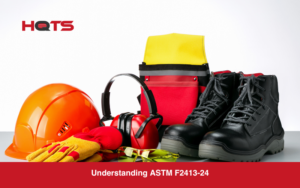In today’s global marketplace, ensuring product safety and compliance with regulatory standards is important, especially in industries like furniture, textiles, and children’s toys.
One major concern in consumer products is how materials react to fire and the potential risks this poses to consumers and the environment. To keep hazardous products off the market, regulatory bodies enforce stringent safety standards regarding flammability.
However, navigating these regulations and requirements can be complex. To help, we’ve put together a quick guide that offers essential insights into flammability testing.
What Is the Flammability Testing?
Flammability testing is a critical evaluation process that assesses how materials respond to controlled fire conditions, following technical standards and norms. This includes analyzing ignition characteristics, flame spread, heat release rate, and smoke generation.
These assessments provide companies with vital data to understand the fire risks associated with their products and ensure adherence to safety standards across various markets.
When and Why Conduct Flammability Tests?
Integrating flammability tests at every stage of the product lifecycle, from initial design and development to manufacturing and distribution, is essential. Early testing empowers manufacturers to pinpoint potential fire hazards and make informed decisions to improve product safety before finalising designs. This proactive approach helps you reduce the risks of product recalls, regulatory issues, and potential liabilities.
Moreover, various regulatory standards require products to undergo flammability testing to ensure they meet safety standards and mitigate the risks associated with fire-related incidents.
What Are the Common Standards for Flammability Testing?
Flammability Testing under European Standards (EN)
EN 1021-1 and EN 1021-2
Assess the ignitability of upholstered furniture by measuring their reaction to a smouldering cigarette and a small flame.
EN 71-2
Specifies safety requirements for the flammability of toys.
Example: Flammability Requirements for Children’s Toys
Under EN 71-2, which sets safety standards for the flammability of toys, plush toys are tested to ensure they burn at a speed no faster than 30 mm/s. Below, you can watch a video of HQTS testing laboratory conducting flammability tests on a plush toy.
EN 13772
Evaluates the fire resistance of curtains and drapes to prevent fire spread in residential and commercial settings.
United States Standards (ASTM, NFPA, CPSC):
ASTM E84 (UL 723)
Measures the surface burning characteristics of building materials, including textiles and coatings.
NFPA 701
Evaluates the flammability of fabrics used in interior furnishings to assess their fire propagation properties.
16 CFR Part 1632
Mandates flammability testing for mattresses to ensure they meet federal safety standards for residential use.
Conclusion: The Quick Guide to Flammability Testing
Flammability testing stands as a cornerstone in guaranteeing product safety and adherence to regulatory standards across various industries. These tests are conducted exclusively in accredited laboratories.
Whether you require assistance in understand flammability testing requirements for your products and intended market, or wish to conduct tests in a third-party ISO/IEC 17025, CMA, CPSC accredited laboratory, HQTS is here to assist. Contact us today for a complimentary consultation or quotation to verify whether your products conform to regulatory standards and are safe for consumers.




